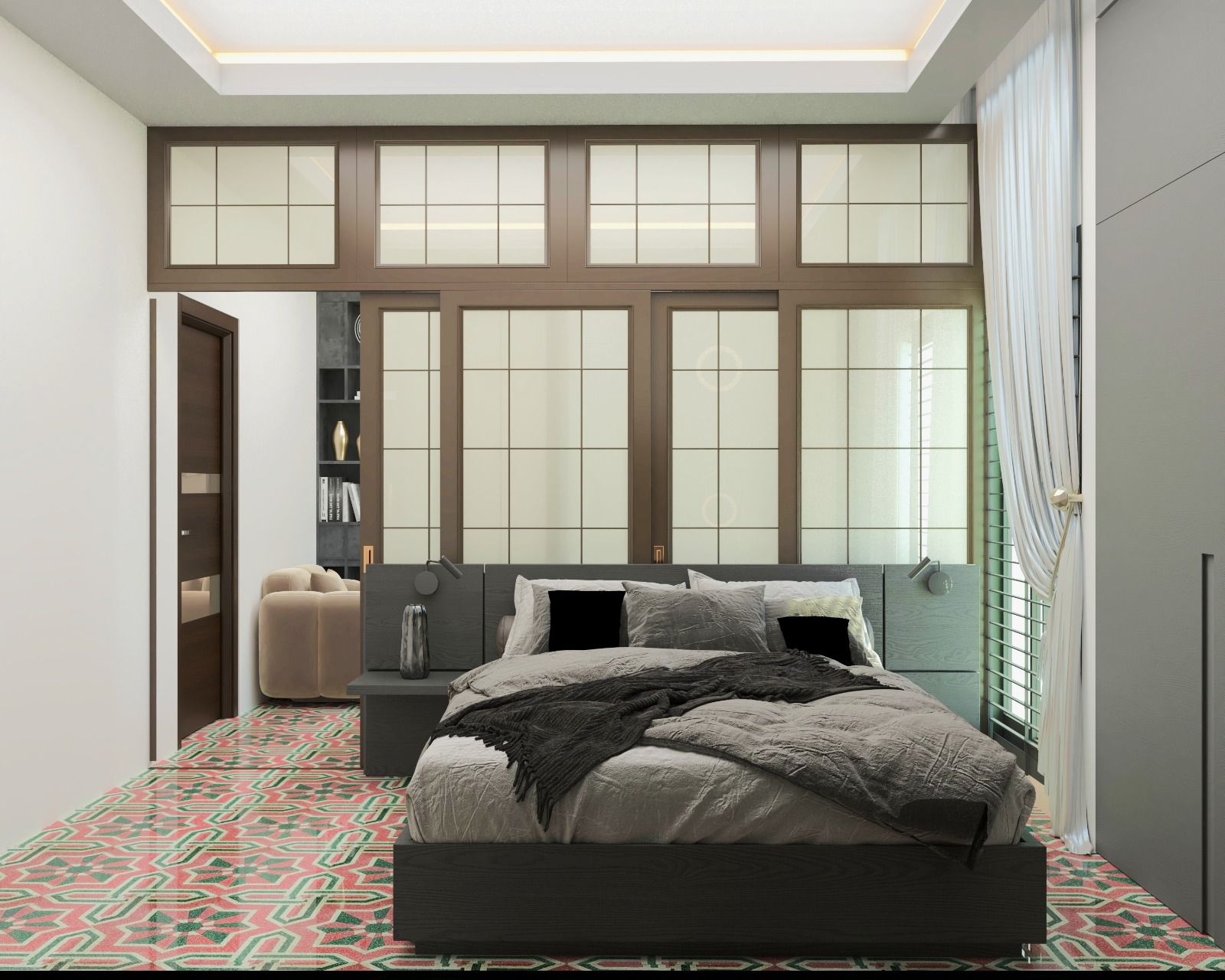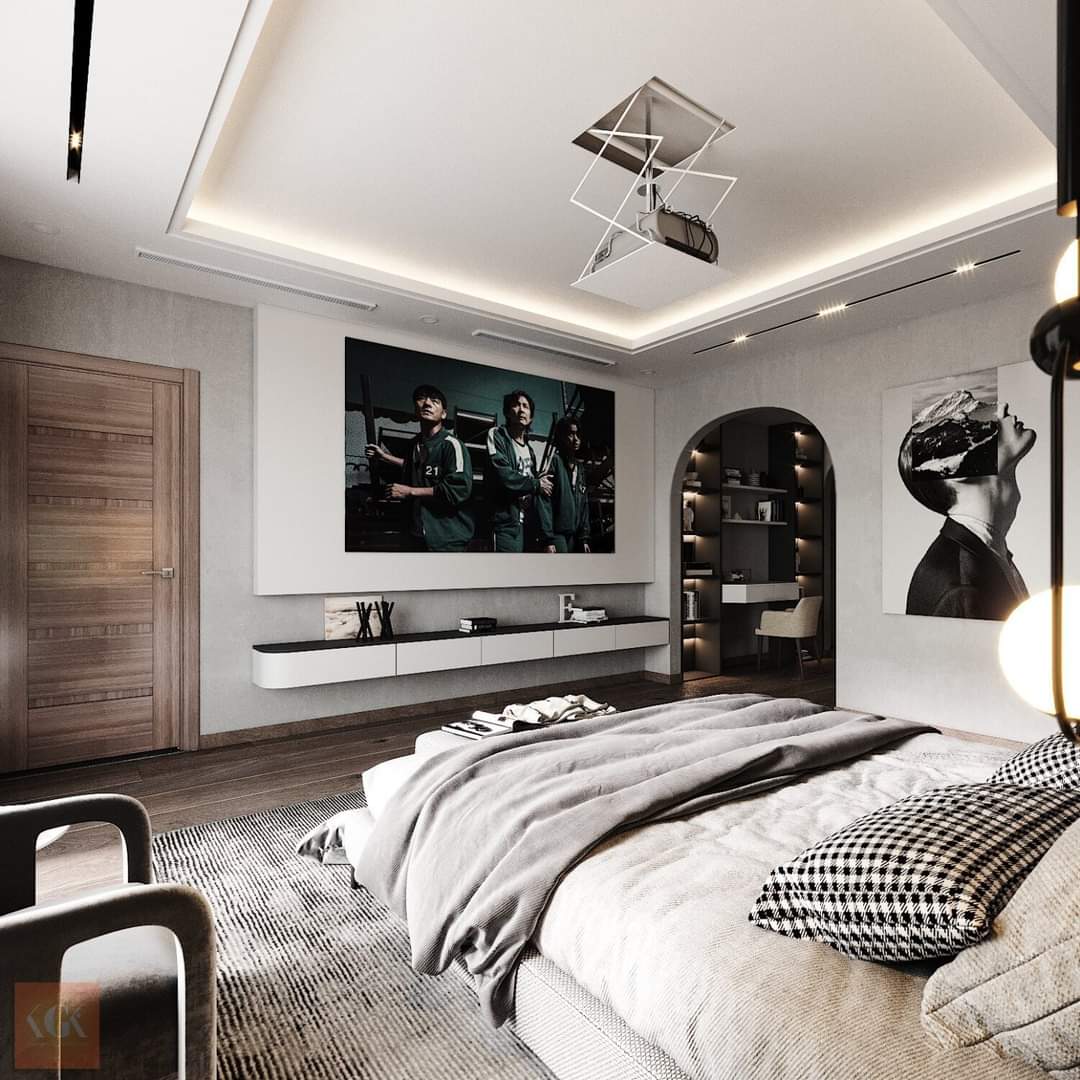
Modern Living Room Interior Design in Bangladesh

Introduction
In Bangladesh, the living room is more than a place to entertain guests – it’s the heart of the home where families relax and recharge after a busy day. Rapid urbanisation and smaller apartments in cities like Dhaka have made space optimisation and smart design essential.
At the same time, the country’s rich culture and warm climate shape how we decorate and use our living spaces. Three design principles can transform a living room into a stylish yet practical retreat: a neutral color palette, a healthy lighting plan and a minimalist approach.
This guide explores why these elements matter, how to apply them to Bangladeshi homes and how they come together to create rooms that feel calm, functional and modern.
Why Neutral Colors Work in Bangladeshi Living Rooms
Neutral colors – whites, creams, beiges, greys and soft taupes – create a timeless backdrop that never goes out of style. They offer several benefits:
-
Timeless appeal and versatility. Neutral colours like beige, gray and white are classic; they don’t date quickly and form a blank canvas that lets you introduce new accent colours or décor whenever you wish. This flexibility is ideal for homeowners who want their living rooms to adapt to changing tastes or seasonal décor.
-
Making rooms look larger. Light neutral shades reflect natural light and create the illusion of a bigger, airier space. In Bangladesh, where urban apartments are often compact, a pale wall colour can make rooms feel spacious rather than cramped.
-
Easy coordination. Neutral palettes simplify furniture and décor choices. Because these hues blend with nearly any style, it’s easier to mix and match furnishings without clashing.
-
Stress‑free decorating. Starting with a neutral base reduces the risk of color fatigue and makes it easier to introduce bolder patterns or textures through rugs, cushions and artwork.

Tips for Using Neutral Colors in Bangladesh
- Choose heat‑friendly shades: Light colors such as white, cream and pale blue absorb less heat, making them perfect for Bangladesh’s warm climate. They also maximize natural light, reducing the need for artificial lighting during the day.
- Add warmth with natural materials: Neutral doesn’t mean boring. Incorporate wooden furniture, bamboo accents or jute rugs to introduce texture and warmth. Natural materials reflect the country’s heritage and align with trends favoring local, eco‑friendly elements.
- Layer tones and textures: Use different shades of neutral – off‑white walls, grey sofas and beige rugs – to add depth. Textured fabrics, woven baskets or terracotta pots keep the room from feeling flat.
- Introduce pops of color sparingly: A colorful throw blanket, a few patterned cushions or artwork inspired by Bangladeshi motifs can energize a neutral space without overpowering it. Keep accents limited so the room retains its calm, uncluttered feel.

Ready to transform your office? Get in touch with the best interior firms in Bangladesh to start designing a space that aligns with your startup’s goals and culture. The right design can make all the difference!
Crafting a Healthy Lighting Plan
Lighting affects how we feel and function in a space. Good living‑room lighting combines natural and artificial sources to create layers of illumination.
Effective lighting design relies on layered lighting – ambient, task, accent and decorative – proper brightness and color temperature, and flexible controls like dimmers.
Understand the types of light:
- Ambient lighting provides overall illumination and sets the room’s general tone. It can come from ceiling fixtures, recessed lights or sunlight through windows.
- Task lighting offers focused light for activities such as reading, working or playing board games. Desk lamps, floor lamps or wall sconces direct light where it’s needed.
- Accent lighting highlights artwork, architectural details or decorative objects. Spotlights and wall sconces should be brighter than ambient light to draw the eye.
- Decorative lighting adds visual interest through stylish fixtures like chandeliers or pendant lights.
Layering and Placement:
- Start with ambient light: Choose a central ceiling fixture that spreads light evenly. In small Dhaka apartments, a flush‑mount ceiling lamp or a cluster pendant adds style without taking up floor space.
- Add task lights: Place floor or table lamps near sofas and reading chairs to reduce eye strain. Wall‑mounted sconces free up space and cast directional light for hobbies or work.
- Use accent lights thoughtfully: Highlight a piece of artwork, a built‑in bookshelf or a textured wall with adjustable spotlights or LED strip lights. Accent lighting should be about three times brighter than the surrounding ambient light.
- Embrace natural light: Large windows and ventilation systems are smart design elements in Bangladesh. Use sheer curtains or blinds to diffuse sunlight while maintaining privacy. Mirrors or glossy finishes can help bounce light around the room.
- Control brightness and color temperature: Warm light (around 2,700 Kelvins) creates a cozy, relaxing atmosphere, while cooler light (4,000–5,000 Kelvins) promotes alertness and productivity. Installing dimmers or smart lighting systems lets you adjust brightness for different times of day.
Sustainable and Energy‑efficient Choices:
LED bulbs consume less energy and last longer than incandescent bulbs. For eco‑friendly living rooms, choose LEDs with adjustable color temperature. Incorporate skylights or clerestory windows where feasible to maximize daylight and reduce electrical consumption. Finally, consider using locally crafted bamboo or clay lampshades to support Bangladeshi artisans.
Embracing a minimalist living‑room concept:
Minimalism isn’t about living with nothing; it’s about removing clutter and focusing on what truly matters. It emphasises simplicity, functionality and intentionality. Its core principles include:
- Simplicity. Choose furnishings and décor that serve a purpose and avoid unnecessary ornamentation.
- Functionality. Prioritise usefulness over elaborate design; every piece should contribute to comfort or storage.
- Neutral color palette. Stick to whites, beiges, greys and black to create cohesion and calm.
- Clean lines and open spaces. Use furniture with simple silhouettes and leave areas of the room empty to foster a sense of openness.
- Quality over quantity. Invest in durable, timeless pieces instead of filling the room with too many items.
How to Design a Minimalist Living Room in Bangladesh?
- Declutter thoroughly. Start by removing items you no longer use. Donate or recycle to keep the space light and airy.
- Choose multifunctional furniture. In Bangladesh’s compact apartments, pieces such as sofa beds, nesting tables or ottomans with hidden storage maximize functionality.
- Limit decorations. Select a few well‑crafted décor pieces instead of many small trinkets. A single artwork, indoor plant or handcrafted textile can make a statement without clutter.
- Embrace natural light and materials. Minimalist design pairs beautifully with large windows and breathable fabrics. Bamboo, rattan, jute and locally woven textiles reflect Bangladeshi craftsmanship while keeping the room grounded.
- Organize thoughtfully. Use built‑in cabinets or wall‑mounted shelves to store items out of sight and maintain a clean look.
- Add personality through texture. Minimalism doesn’t have to feel sterile. Layer textures – linen cushions, a woven rug or a clay vase – to add warmth and interest.
Integrating Neutral Colors, Healthy Lighting and Minimalism
When combined, neutral colors, layered lighting, and minimalist design create a harmonious living room that feels calm, spacious, and functional. Here’s how to integrate them effectively:
- Start with a neutral base. Paint the walls in off-white, beige, or light grey, and choose a neutral sofa. This sets a calming backdrop and reflects daylight, making small living rooms in Dhaka or Chattogram feel larger.
- Apply the minimalist mindset: Select only the essential pieces – a comfortable sofa, a functional coffee table, a media unit, and a couple of armchairs. Avoid excessive decorative objects. Opt for clean lines and ensure each item has a purpose.
- Layer your lighting: Combine a ceiling fixture for ambient light with task lamps beside seating and accent lights to showcase artwork or architectural details. Use dimmers to transition from bright illumination during family gatherings to softer, mood-lit lighting for relaxation.
- Use natural elements as accents: Add indoor plants like snake plant (shishir ghas), money plant, or peace lily to purify the air and bring life to the room. Pair neutral colors with natural textures – woven baskets, clay pottery, or bamboo lamps – to balance simplicity with warmth.
- Consider the local climate: Large windows, cross‑ventilation, and breathable curtains keep the room cool and bright. Light colors absorb less heat and complement Bangladesh’s tropical climate. During the monsoon season, ensure that moisture-prone areas are well-ventilated to prevent dampness.
Why Choose Design Doctors Studio?
Design Doctors Studio has been creating inspiring interiors across Bangladesh for more than 25 years. As a Dhaka-based interior design company, their team understands the challenges of designing for small apartments, duplex houses, and modern office spaces.
They specialise in blending aesthetics with practicality: neutral colour schemes that stand the test of time, well‑planned lighting that adapts to family life, and minimalist layouts that maximise usable space. Working with local craftsmen and sustainable materials, Design Doctors Studio ensures that every project reflects Bangladeshi culture while meeting contemporary needs.
Whether you’re renovating a compact apartment in Gulshan or designing a luxurious living room in Chattogram, their designers will work with you from concept to completion. You’ll receive detailed floor plans, 3D visualisations, and guidance on furniture, lighting, and décor. The result: a living room that’s calm, comfortable, and tailored to your lifestyle.
Conclusion
In Bangladesh’s fast‑paced urban environment, your living room should be a peaceful retreat where family and friends can gather. Choosing a neutral color palette offers a timeless, versatile backdrop that makes small spaces feel larger.
Implementing a comprehensive lighting plan with layered ambient, task, and accent lighting enhances mood, functionality, and energy efficiency. Adopting a minimalist design philosophy declutters your space, reduces stress, and allows your personality to shine through in carefully chosen pieces.
By combining these three principles and tailoring them to Bangladesh’s climate and culture, you can create a living room that is both stylish and practical. If you need expert guidance, Design Doctors Studio offers the experience and local insight to bring your vision to life.
Author: Al-Amin Ifty, Design Doctors Studio @2025

